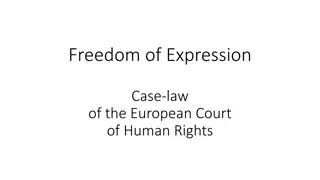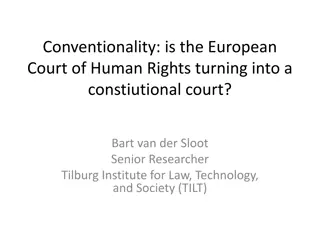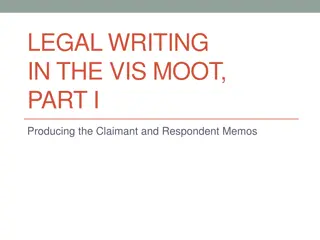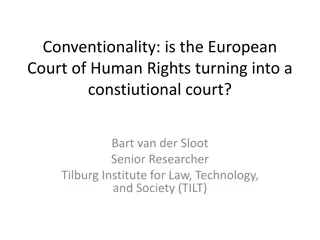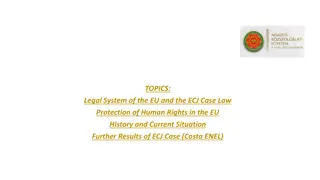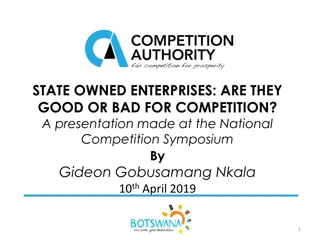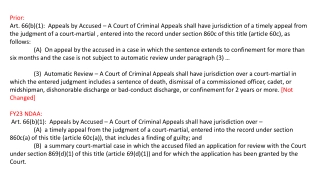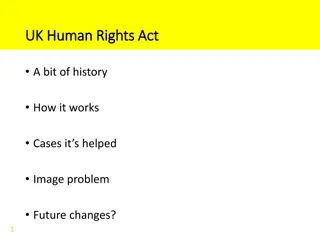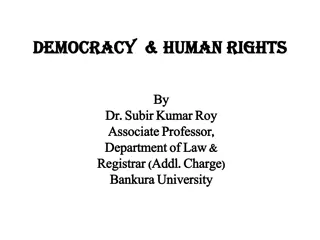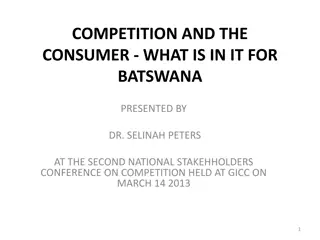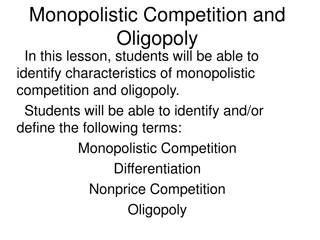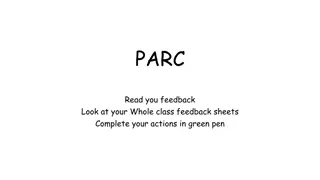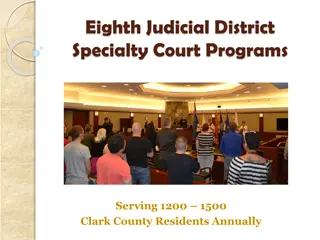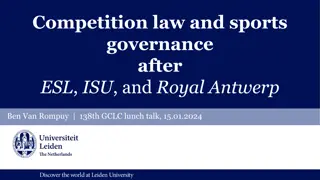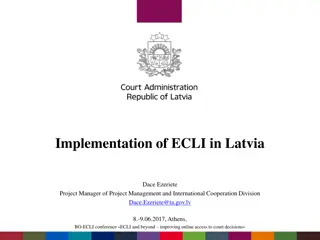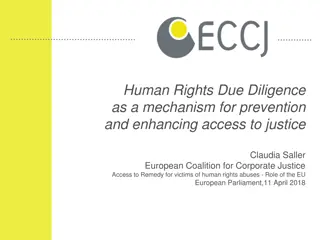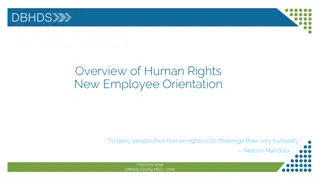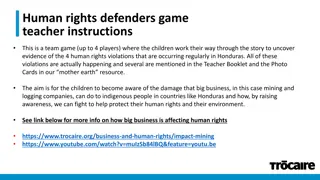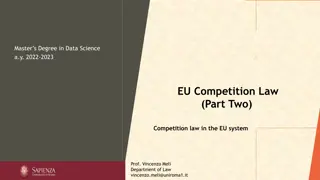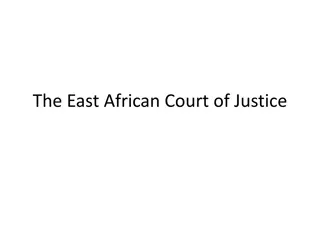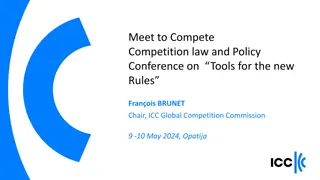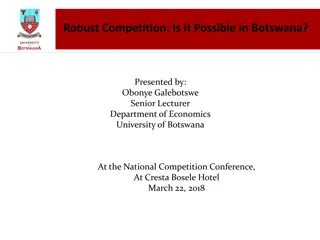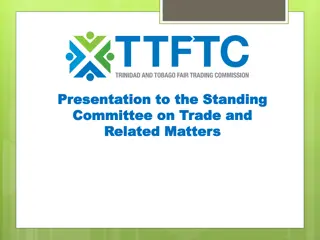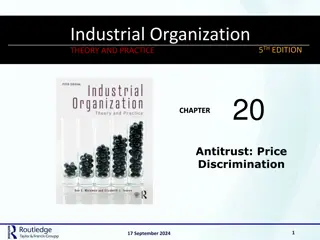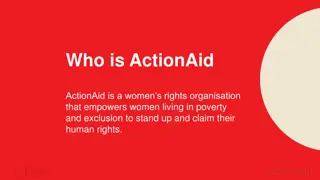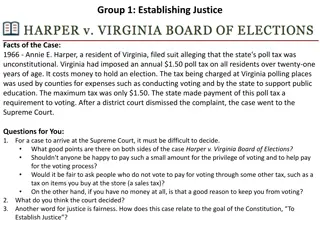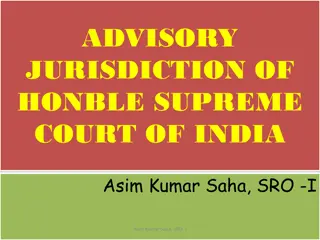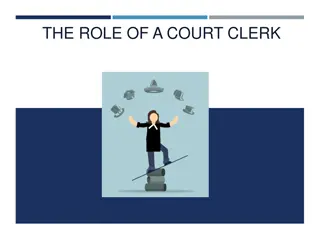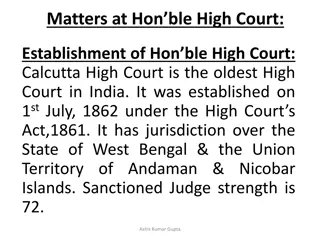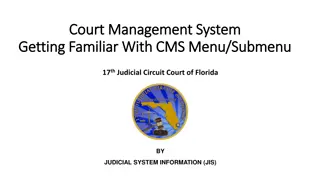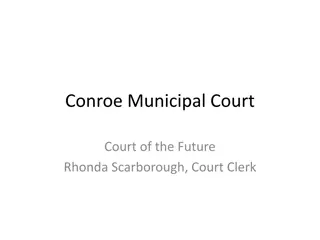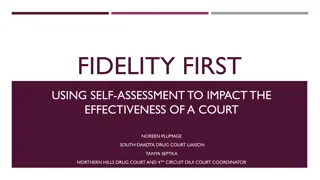European Human Rights Moot Court Competition Organization Guide
Detailed guide on organizing the European Human Rights Moot Court Competition, including pre-moot activities, team registration, steps for promotion and preparation, as well as tasks to be done leading up to the event.
Download Presentation

Please find below an Image/Link to download the presentation.
The content on the website is provided AS IS for your information and personal use only. It may not be sold, licensed, or shared on other websites without obtaining consent from the author. Download presentation by click this link. If you encounter any issues during the download, it is possible that the publisher has removed the file from their server.
E N D
Presentation Transcript
The European Human Rights Moot Court Competition Pre-moots LXVIII International Council Meeting, Batumi, 18-25th October 2015
The European Human Rights Moot Court Competition What the Pre-moot is? It is not elimination round winner will not be qualified to the FOR Finding suitable solutions for future expansion Chance for teams to practice before the Final Chance for teams which will not be qualified to the Final to experience the oral pleadings part Cooperate with other Local/National Groups Chance for National Groups to be involved in international project
The European Human Rights Moot Court Competition What can be done? Rules are binding All the teams must be registered to ELSA International All the teams must send their WS directly to ELSA International Before or after the WS results The best team will not go directly to the Final in Strasbourg Still, only one team per University
The European Human Rights Moot Court Competition Step by step Promotion, information about the Round spread online Inform your Local Groups, motivate them to create a team Personal approach! Get from VP MCC EI score sheets The same Case, the same Rules make it accessible Research of potential Sponsors and Judges Prepare presentation of the project, offer, oficiall invitation to serve as a Judge, press release, documents for honorary patronage Create budget
The European Human Rights Moot Court Competition 2/3 months before the event Time for Local Groups to find teams Official invitation to Judges, provide them with guidelines Book pleading venues Cathering Accommodation, if provided Search for prizes
The European Human Rights Moot Court Competition After 15th of November You know exact number of teams, which sent their Submissions to ELSA International Provide teams with all needed information regarding the Round Finalize the pleading schedule Print materials Prepare the OC schedule for the Round Brieding for the OC Training for Timekeepers Finalize social programme
The European Human Rights Moot Court Competition Oral Pleadings Teams plead on both sides - Applicant and Respondent, Applicant on the rights side of the Jury Brief the Jury The Jury has to consider the following points while scoring the oral pleadings: weighing of legal issues, argumentation (logic, reasoning), legal analysis (law, treaties, analysis and application of it), style (grammar, organization of arguments), teamwork, answering to judges questions.
The European Human Rights Moot Court Competition The Chairman of the Jury will welcome the teams Teams introduction Applicant 35 minutes time Respondent 35 minutes time The Jury may ask questions during these pleadings at any time and number It is up to the jury s discretion whether a team shall be granted additional time when requested. Applicant - 5 minutes to present the rebuttal (according to what the respondent presented) Respondent - 5 minutes to present the sur-rebuttal on the just stated arguments from the applicant
The European Human Rights Moot Court Competition The Pleading sheets a) The Team Appearance Sheet Give 1 to each team and let them fill it out immediately Then fill in the names from the appearance sheet into the score sheets for the Judges (2 for each Judge applicant, respondent) b) The Score Sheet Each Judge has to receive 2 Score Sheets one for the Applicant and one for the Respondent (with the names of the teams filled out by you) They have to be signed
The European Human Rights Moot Court Competition c) The Timekeeper Sheet The timekeepers need 2 timekeeper sheets Fill in the names of the participants pleading and not pleading Fill in the minutes they said they will be speaking Minute the time show the time cards and count the time (25,20,15,10,5,3,2,1,TIME) use the second page of the timekeeper sheet as orientation Count the questions from the Jury in the time per team, do not stop the clock Afterwards fill in the actual main pleading time Fill in the time of the rebuttal/sur-rebuttal Sign the timekeepers sheet
The European Human Rights Moot Court Competition National Rounds in the Network
The European Human Rights Moot Court Competition Discussion: pre-moots, is it a way to go?



